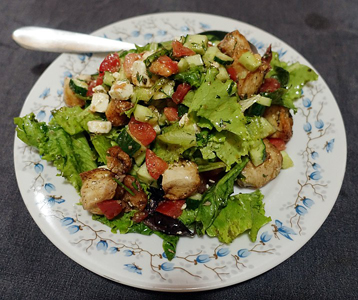Jun 20, 2018Meeting in the Middle, Part Three
Over the last two weeks, we’ve talked about the advantages and disadvantages of the “If It Fits Your Macros” diet. In this edition, we detail how to help an athlete try out the plan.
Part One of this article (on advantages) can be found here.
Part Two of this article (on disadvantages) can be found here.
If your athlete knows all the potential pros and cons of IIFYM and still wants to pursue it, get them started the right way. First, make sure they have a general knowledge of nutritious foods so they can do IIFYM appropriately. One way to make sure athletes have a good nutritional foundation is to invite a registered dietitian to speak with them about proper fueling on the IIFYM diet.
Next, consider when would be the ideal time for the athlete to dive into this new eating plan. The offseason is probably the best choice because it gives the athlete a chance to “test the waters.” There is usually some degree of tweaking needed when starting flexible dieting, and you don’t want that to hinder performance during the season.
After settling on a time to begin IIFYM, the athlete must calculate how many macros to consume each day. Start by having them determine their total daily energy expenditure (TDEE) or how many calories their body burns each day. There are online calculators to get this number, and it’s based on a variety of factors, including height, weight, and activity level. If the athlete wants to maintain their current body composition, they would aim to consume their TDEE amount of calories daily. To gain muscle, they would shoot for more than their TDEE, and to lose fat, they would reduce their calorie intake.
Then, the athlete should calculate how to distribute those daily allotted calories among the macronutrients using the U.S. Department of Agriculture’s Acceptable Macronutrient Distribution Ranges: 45 to 65 percent from carbohydrates, 10 to 35 percent from protein, and 20 to 35 percent from fat. There are many websites that will compute this for athletes, such as IIFYM.com. To transfer from calories to grams for each macro, use these conversions:
• One gram of protein = four calories
• One gram of carbs = four calories
• One gram of fat = nine calories.
Going off the recommended ranges, athletes can customize their macro intake based on their body composition goals, sport, and duration and intensity of training. Other factors such as age, gender, and current weight should also be considered. It’s difficult to give suggestions since the appropriate macro amount is so specific for each individual, but here are a few recommendations to provide guidance:
• Endurance athletes need to be on the higher end of the carbohydrate range.
• Athletes looking to lose weight and get lean should consider a higher amount of protein.
• Athletes who feel hungry constantly or unsatisfied after meals can try increasing fat intake.
As athletes get going with IIFYM, most will need to further adjust their macro intake to some extent, especially if they start to feel depleted or have trouble recovering after workouts. If they are feeling fatigued, they likely need to consume more carbohydrates before and during activity. (Hydration may be a factor, as well.) To improve recovery, athletes should grab a post-workout snack that balances carbohydrates to refuel glycogen stores and quality protein to rebuild and repair muscle fibers.
In addition, athletes should pay attention to nutrient timing within IIFYM. Consuming the right amount and kinds of carbohydrates and protein before and after workouts can keep them fueled, assist in muscle growth and recovery, and prevent injury. Tell them to get complex carbohydrates throughout the day and during exercise and budget around 30 grams of protein after activity for optimal fueling.
Another important factor to consider often gets forgotten once athletes get wrapped up in counting their macros: hydration. Staying hydrated should be a top priority for athletes following flexible dieting. A general rule of thumb is to have the athlete drink half their weight in ounces per day.
Once the athlete has set and refined their daily macronutrient totals, it helps for them to create a plan and stick to it. Long-term compliance is essential for maintaining results with flexible dieting. One common strategy is to have athletes write out a plan for the week and schedule times for meals and snacks, so they are less likely to skip eating or resort to unhealthy temptations.
Overall, flexible dieting can help athletes become more aware of the nutrient composition of foods, which can result in long-term, healthy habits. Rather than labeling foods as “bad” or “good,” it allows all foods in moderation. While tracking intake can be tedious, and it’s important to harp on food quality, when done correctly, IIFYM can help athletes gain a winning edge.
Image by Tiia Monto



